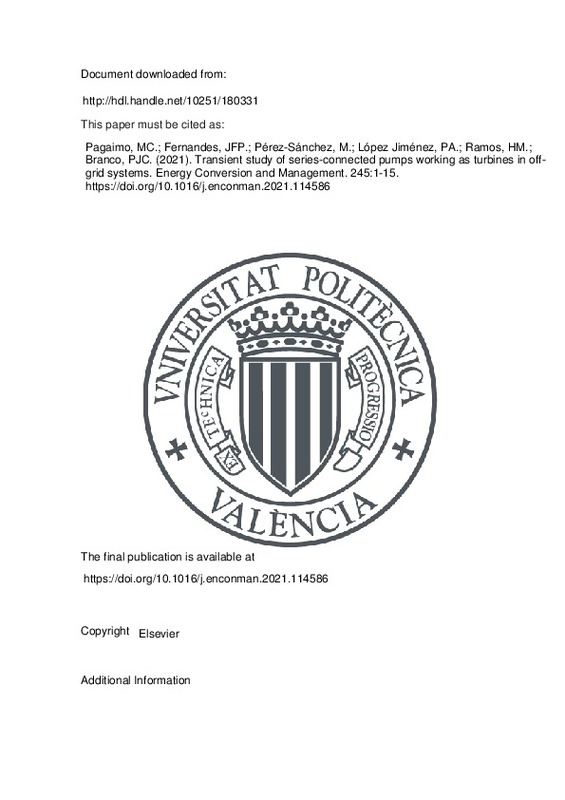JavaScript is disabled for your browser. Some features of this site may not work without it.
Buscar en RiuNet
Listar
Mi cuenta
Estadísticas
Ayuda RiuNet
Admin. UPV
Transient study of series-connected pumps working as turbines in off-grid systems
Mostrar el registro completo del ítem
Pagaimo, MC.; Fernandes, JFP.; Pérez-Sánchez, M.; López Jiménez, PA.; Ramos, HM.; Branco, PJC. (2021). Transient study of series-connected pumps working as turbines in off-grid systems. Energy Conversion and Management. 245:1-15. https://doi.org/10.1016/j.enconman.2021.114586
Por favor, use este identificador para citar o enlazar este ítem: http://hdl.handle.net/10251/180331
Ficheros en el ítem
Metadatos del ítem
| Título: | Transient study of series-connected pumps working as turbines in off-grid systems | |
| Autor: | Pagaimo, Margarida C. Fernandes, Joao F. P. Ramos, Helena M. Branco, P. J. Costa | |
| Entidad UPV: |
|
|
| Fecha difusión: |
|
|
| Resumen: |
[EN] In the current world economic environment where reducing energy costs is a high priority, it is not surprising that sustainable water and energy management are key topics among the water and electric industry. ...[+]
|
|
| Palabras clave: |
|
|
| Derechos de uso: | Reconocimiento - No comercial - Sin obra derivada (by-nc-nd) | |
| Fuente: |
|
|
| DOI: |
|
|
| Editorial: |
|
|
| Versión del editor: | https://doi.org/10.1016/j.enconman.2021.114586 | |
| Código del Proyecto: |
|
|
| Agradecimientos: |
This work was supported by FCT, through IDMEC, under LAETA, project UID/EMS/50022/2020 and the project REDAWN (Reducing Energy Dependency in Atlantic Area Water Networks) EAPA_198/2016 from INTERREG ATLANTIC AREA PROGRAMME ...[+]
|
|
| Tipo: |
|







![[Cerrado]](/themes/UPV/images/candado.png)


